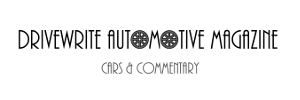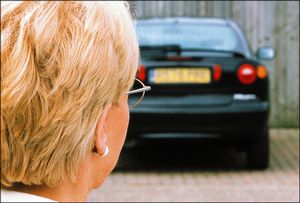|
By accessing/using The Crittenden Automotive Library/CarsAndRacingStuff.com, you signify your agreement with the Terms of Use on our Legal Information page. Our Privacy Policy is also available there. |

Keeping Them Peeled - Your Driving Vision
|
|---|
|
|
Keeping Them Peeled - Your Driving Vision
Geoff Maxted
DriveWrite
January 6, 2014
When I was a lad in the Army cadets I got to shoot actual real guns which, as you can imagine, was thrilling for one so young. I proved to be a terrible shot. I became adept at nicking the edges of really massive targets. In short, I couldn’t hit a barn door. Ultimately, it was decided that the only suitable weapon for me was some form of wide angle blunderbuss. It was clear I needed spectacles.
Spectacles, or more commonly glasses if you prefer, are the things that most drivers reckon that most other drivers should be wearing. If they are already wearing them then most drivers reckon they should get some better, stronger ones. They may even tell you as part of a crash course in basic Anglo-Saxon accompanied by self-explanatory hand gestures. It has always been this way.
To say that glasses are important to any driver who has eyesight problems is rather stating the obvious. The DVLA point out, not unreasonably, that you must tell them if you have eye problems that affect both your eyes or, rather ominously, the remaining eye if you only have the one. This is one of the basic principles of the practical driving test.
The law requires that you are able to read a standard number plate from twenty metres away - with glasses or contacts if already using them. You must also have the correct visual acuity as measured by the Snellen Scale - which is that board with the ever decreasing letters - and have an adequate field of vision. So if horse blinkers ever become a fashion item don‘t wear them to your test. Fail the eyesight test and you may not even make it to the vehicle.
Even if you are entirely happy with your eyesight it may well be a good idea to have a test anyway to be sure. As any wearer of glasses will tell you, eyesight deterioration tends to creep up unnoticed as your brain automatically compensates.
Driving along myopically peering over the steering wheel is an offence; that’s an obvious given. Yet many people once past that initial phase will go on driving even as their eyesight gets worse. It’s just not something folk really think about. Wearing glasses becomes like teeth cleaning or car washing - you just do it.
Your eyes get tired and they age like the rest of you. Your sight can be affected by ill health too and the first step is to know the signs. Health problems don’t always mean that driving needs to be stopped, but do require extra vigilance, awareness, and a willingness to correct them if necessary. Some eye conditions or medications can interfere with your ability to focus your peripheral vision, or cause you to experience extra sensitivity to light, trouble seeing in the dark, or blurred vision. Can you easily see traffic lights and street signs? Or do you find yourself driving closer and closer, slowing by a sign to see it?
Perfect eyesight is even more relevant today than it has ever been given our crowded roads. These days you really do need eyes in the back of your head and be constantly on the alert for the next numpty heading your way.
So why not do yourself a favour. With or without glasses, do the number plate test from time to time in car parks or down your street. Generously estimate the twenty metres and give it a go. If you find you start getting funny looks because of your Mr Magoo impressions then a trip to the opticians may be called for.
Think about it. If you unfortunately do have an accident, is it possible that your eyesight might be called into question? If that is so, what do you think your insurance company will think of that? You could well be facing a bill much higher than a new pair of specs. Keep ‘em peeled.



















